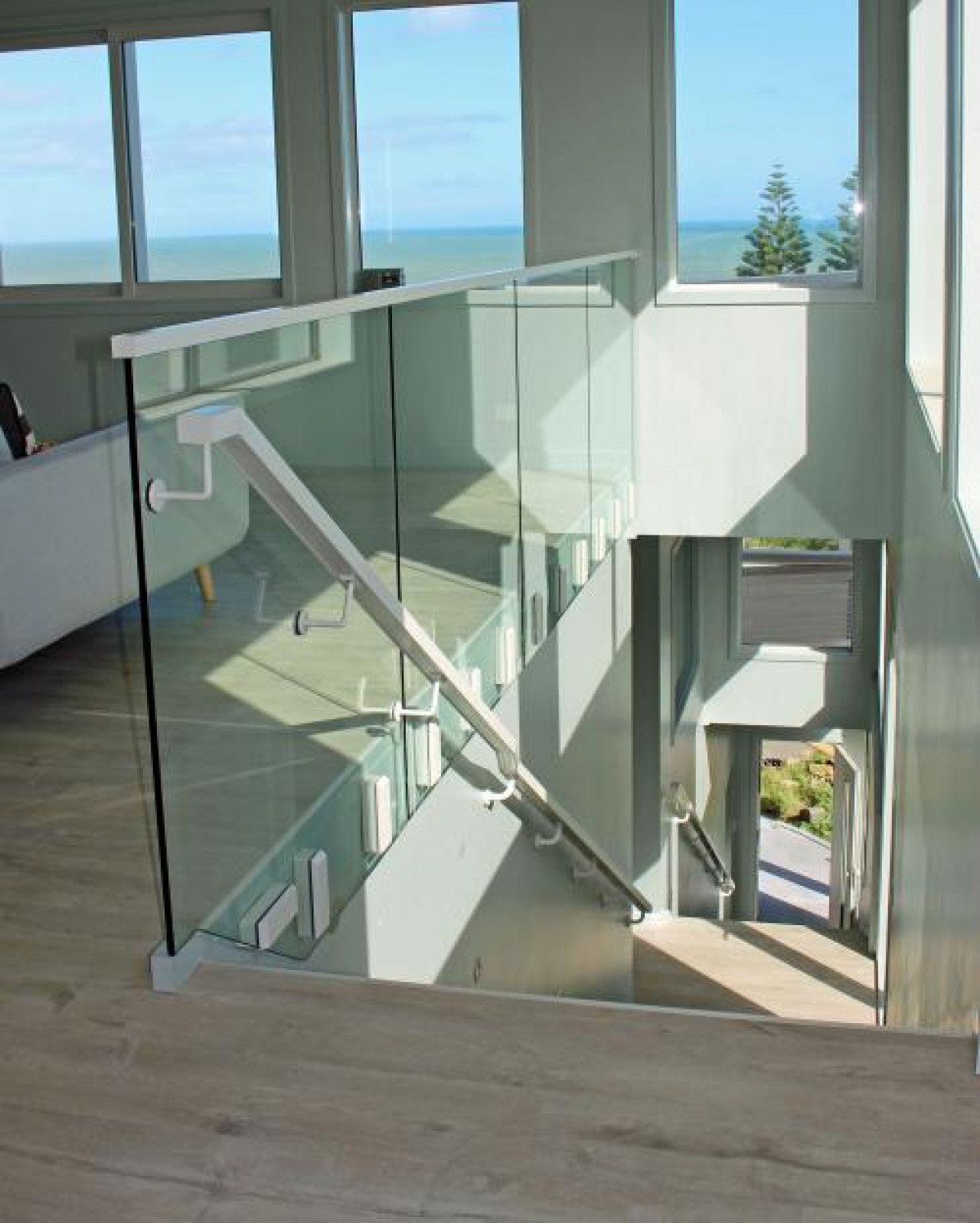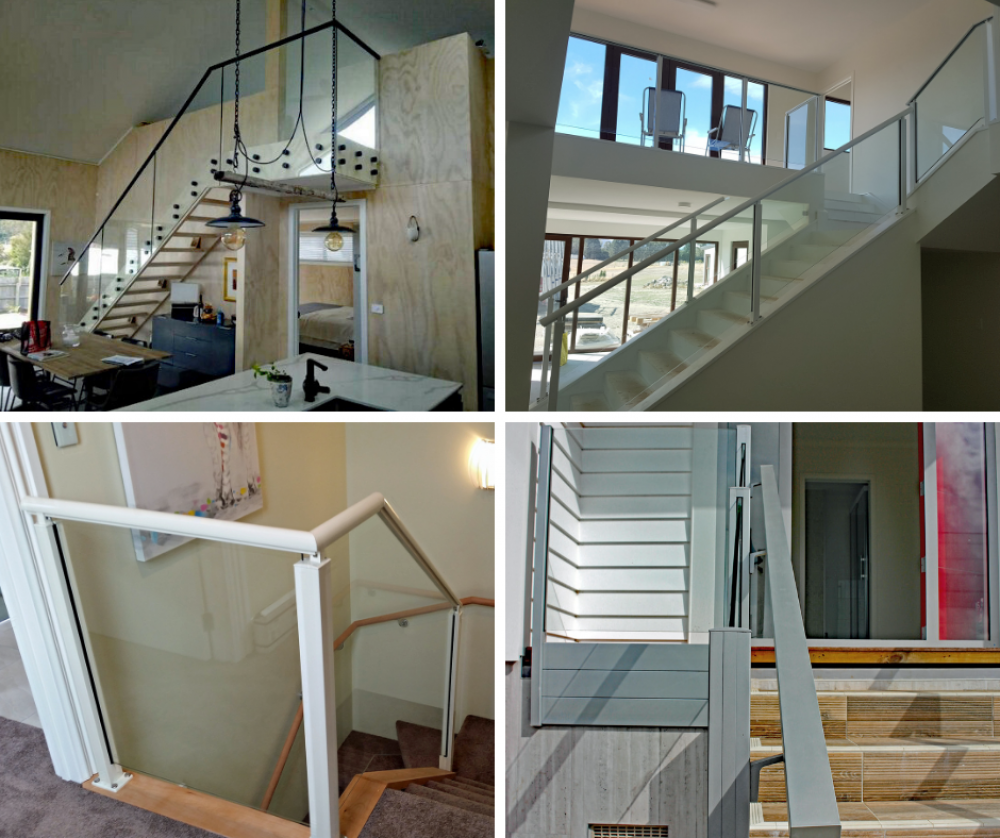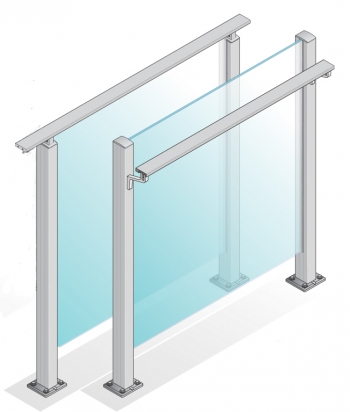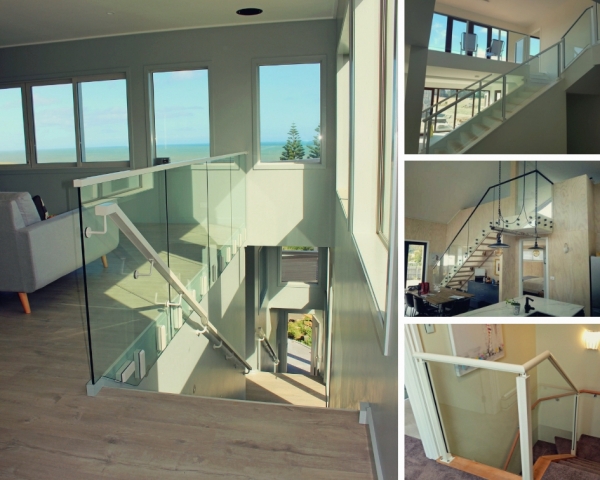
Choosing Balustrades & Handrails For Stairs
19 November 2018 by HomePlus NZ
How to choose a stylish stairway balustrade & handrail
With stairs being such a large part of a home, they do have a large influence on setting or continuing the style of the home, so the choice of a stairway handrail and balustrade is a great way to enhance and reinforce the style that you want for your home.
Of course, safety is always the most important consideration for any stair balustrade and handrail. Most importantly they need to be strong and stable enough to stop falls or support people who lean on them or grab them for stability and secondly, they need to add style to what is essentially a very functional part of your home.
 What are NZ Building Code Regulations for stairs?
What are NZ Building Code Regulations for stairs?
NZ building code regulations for stairs relate to the height, depth and pitch of stairs and the compulsory handrails and balustrades (safety barriers).
Heights:
- Balustrades for stairs must be a minimum of 900mm high, which is different from the minimum height of 1000mm for everywhere else in the house, including the stair landings*.
- Handrails must run continuously along one side of all stairways and at a minimum height of 900 mm from the stair pitch, up to 1000mm high, in residential housing.
Whilst this is just a summary of the regulations, any experienced balustrade installer should be knowledgeable in these regulations and skilled in suggesting and fitting handrails or balustrades, which are fully compliant and in a style you love.
So how do you go about choosing a safe and attractive balustrade and handrail?
Whilst choosing a balustrade or handrail style could easily overwhelm you, there is one simple trick that can help you narrow down your choices. To help identify your home's style, step back and pick out the features or theme that you gravitate towards when you make design decisions, the style you favour will be really clear. Looking at the lampshades, furniture or paint colours for example will clearly show whether you favour a minimalist or industrial finish, or perhaps a softer country style, or classic and traditional look. Based on this you can quickly work out which balustrade or handrail style is not suitable, for example, if you have a classic or traditional home then clearly a minimalist finish wouldn’t work. Likewise, if the style is more of a modern or restrained design, a traditional baluster balustrade or the larger round handrail would look out of place but would be suitable for a classic home. Pick a style feature and then pick a balustrade that replicates this style, focusing on the type of balustrade fixing and the finished colour.
What kind of materials should I choose?
Modern hardwearing materials are readily available and have expanded the options beyond the limited choice of bygone eras. Budget plays an important part in the choice of materials, but for longevity and good value, finishes such as powder-coated aluminium handrails and toughened safety glass infills are highly recommended. Although initially there could be a larger upfront cost, in the long run, they prove to be really good value, not only lasting longer and wearing better, but of course, these modern materials don’t need regular painting or touch-ups and are virtually maintenance.
Glass balustrades are a modern solution for stair balustrades and are particularly popular for their clear and clean finish which opens up the stairwell with a flood of natural light. Glass panels are fixed in place with balustrade fittings that you have chosen to resonate with your style. For a frameless glass balustrade finish, you can choose from minimalist round discs, rectangular fixings, strut posts or a fully enclosed channel style. Or choose from different options for a more traditional aluminium balustrade post and glass or baluster look, such as a semi-frameless or framed glass finish, or a particular handrail shape and style which can be replicated in other areas of the house for consistent styling.
Keeping in mind that ‘safety is always the most important consideration’ for any balustrade or handrail, recent changes in regulations mean all frameless glass balustrades must now include a top rail or handrail for increased safety**. However, knowing how popular an uninterrupted frameless glass finish is, a low profile, slim top rail was developed and introduced for the least visual impact on the finished look. Available in a square or round profile, the top rail can also be used as a handrail for a complete match. Additionally, with a dark-coloured finish, the top rails have been proven to blend in even more. Specialised connectors and accessories, which have been developed as part of this top rail range, also add to the overall polished finish.
Standard handrails are another reliable option and come in a variety of shapes, styles and sizes, complementing the balustrades they are fitted on. Here you can see some of the beautiful balustrade and handrail combinations installed in NZ homes.
*Handrail heights on stairs and landings
**There are options for glass balustrades not requiring a top rail, please talk to your balustrade installer about them.

Recent Blog Posts
Introduction: In a groundbreaking development on December 11, 2023, the building industry witnessed a transformative milestone with the...
19 December 2023Keeping up with NZ Building Regulation Changes *This is an updated version of an older article
Deck barriers have evolved...
While enjoying a cup of tea or something colder and stronger in your garden near your pool it...
27 February 2023Stunning Queenstown location uses Edge Double Disc Anchor Glass Balustrades and Edge Stecca aluminium balustrade.
16 June 2022Login
Don't have an account? Sign Up!
If your account was created on the old site, please, click here to reset your password first.
Sign Up
Already have an account? Login here!
Update Details
Looking for something?
Enter a search in the field below.